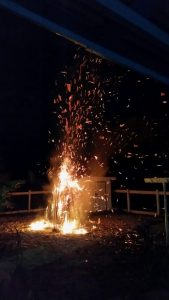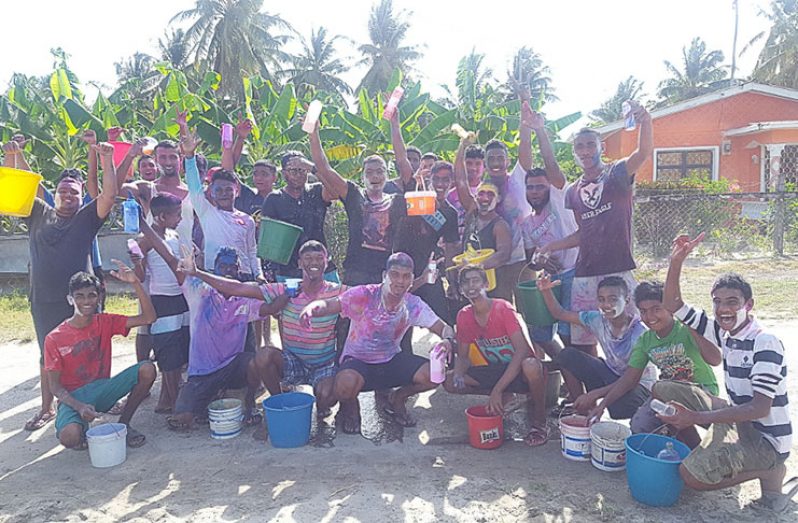By Indrawattie Natram

OF ALL the national holidays celebrated in Guyana, Phagwah (Holi) is among the most anticipated ones in the Pomeroon-Supenaam region. The atmosphere during the day is always a celebratory one filled with many colourful faces. This year the hub of activities and celebrations will be at the Anna Regina Community Centre Ground and Jaigobin Tarmac.
Annually, the Phagwah melas hosted by the Guyana Hindu Dharmic Sabha and the businessmen attract thousands of persons who show up to celebrate the holiday to the fullest. The festival of colours is usually celebrated with much pomp and ceremony in the region.
On Holi morning, scores of youths and elders would usually walk through the streets in the communities exchanging holiday greetings and drenching each other with coloured water and powder.
The celebration commences as early as 05:00hrs with neighbours and mandir members visiting the “Bonfire” site uplifting the ashes. They then mix the ashes in water and drench each other and many of those who are still sleeping beyond that time are given a rude awakening with the splash of some cold iced water.

The first half of Phagwah morning is observed with water and the second half with powder.
The celebrations usually attract huge truckloads of persons from various villages driving through streets in a motorcade style, drenching each other and displaying a true sense of unity, cohesion and togetherness. Children are always the happiest throughout the season as they are given toys such as water guns filled with “Abeer” and are allowed to run through the streets provoking elders- they are usually prohibited other days and holidays to do so.
Hindu homes are usually filled with sumptuous Indian dishes and sweetmeats. Sweetmeats and seven curries are usually prepared and exchanged with relatives, friends and well-wishers.

Religious Holi services are usually conducted at various Mandirs throughout the coast where popular chowtaals, ulara, jhumar, lej, baiswara, dhamar, rasiya, kabir, jogira are sung. Mandir members usually conduct hawan service after which persons play Phagwah with each other.
Mandirs also observe Holika Dahan or the burning of Holika the night before the holiday at various open spaces. Holi was burnt on phagwah night; full moon day of the Hindu month of phalgun. It is also known as the last day of the Hindu year based on Vickram Samvat. A huge structure is built which symbolises the act of King Hiranyakashayapur and his sister Holika who had a boon which made her immune to the effect of fire. The King Kiranyakashayapur then put his son Prahalad, who refused to worship him as God, to sit on his sister’s lap who had a fireproof sari. Prahalad, however, escaped unscathed and Holika was reduced to ashes instead.
The day usually ends with persons going to the Melas at Anna Regina. There, many persons would converge, smearing each other’s faces and indulge in the cultural programmes that are organised by the Guyana Hindu Dharmic Sabha. The festival of Holi signifies the triumph of good over evil.



.jpg)









